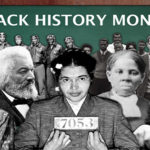| By Scott Graf, VoA News
Charlotte, NC – November 28, 2005 – Twenty-seven years ago in Albuquerque, New Mexico, the American Indian Science and Engineering Society met for its first-ever conference. Total attendance was 50 people. Fast forward to this month. The group’s most recent conference drew more than 1200 people to Charlotte, North Carolina. At a reception hall in a spacious convention center, Native American students, professionals and elders have joined together to kick-off three days of networking, professional training and spirituality. When the American Indian Science and Engineering Society, also known as AISES (aces), was formed in the 1970s, its mission was simple: to graduate American Indian students with degrees in science, engineering and other technical fields. AISES Director Pamela Silas says as that’s happened, the group’s mission has grown. “We’re not just encouraging students to obtain their educational success,” she explains, “but for them to put that success to use in some of the community goals. Whether they live in an urban setting or whether they live in a reservation tribal community, to kind of put that skill set to work towards the good of a larger body of people.” Ms. Silas says more frequently than ever, Native American students are graduating with degrees in fields like mechanical engineering, electrical engineering and biotechnology. To date, 17,000 Native Americans have been through the AISES program and are working in fields related to science and engineering. And AISES board member Andrew Conseen Duff says to make a difference in their communities, those Native American scientists and engineers are not necessarily being asked to make world-changing discoveries, like “a better gene set that’s going to save us from cancer. It may be something as simple as providing water to a local community. And so hydrology has a very simple effect, but it has a major impact on the American Indian communities.” To many Native Americans, seeing their people understand and use science to benefit their communities is nothing new. AISES Director Pamela Silas says her ancestors have been well-versed in science for thousands of years, pointing to what she calls “incredible accomplishments in engineering and science” that are part of American Indian tradition. “Chaco Canyon in New Mexico? Engineering feat. The agriculture accomplishments of the Iroquois…were incredible. There are a lot of things to celebrate in our history of those achievements.” She says today’s movement is simply aimed at regaining some of those lost skills.
In addition to the technical skills the AISES organization hopes to foster in American Indians, it also wants to help build tomorrow’s leaders. An example is the young man who won this year’s AISES award for Most Promising Engineer. John DeBassige, 26, works as an engineer for Sandia National Laboratories in Albuquerque. He helps design components for nuclear weapons and other defense systems for the U.S. government. And now, Mr. DeBassige says, he’s hoping his achievement will encourage other Native Americans to pursue science and engineering careers. “One of the things that I’m most proud of is that I’ve been able to go back and talk to young kids, and even my peers at this point, and just to show them that it’s not impossible. I’ve come from the same background. I’m not smarter than you. It’s just a matter of determination, getting a little bit of discipline, meeting the right people.” While it’s obvious he understands his new status as a role model for other young Native Americans, Mr. DeBassige is also quick to give thanks to someone who served as his role model. That person is AISES member Laurence Brown, who is a government relations manager for Sandia. Mr. Brown is also a Native American. He says there’s been a concerted effort by the company to seek out American Indians and other minorities, with good reason. “Coming to a solution to a problem requires the different inputs from different people, different cultures, different ways of looking at things to come up with the best solution.” Part of his company’s attraction to Native American graduates, Mr. Brown says, is their cultural value system and the way they’re raised to think holistically, to regard everything as being connected, and part of a whole. His former apprentice, John DeBassige agrees, and says that type of thinking explains why American Indians take a unique approach to solving problems. “The way we handle problems is quite different than other cultures I’ve seen. We tend to step back instead of full force. I’ve noticed a lot of natives kind of step back and really get the broad picture of the problem and try to solve it from a strategic type of a attack as opposed to a tactical mission.” And as science and technology become increasingly complex in the 21st century, the young engineer believes the demand for that type of thinking will grow. And with the help of AISES, more and more American Indians will be prepared to respond to that demand and to play leading roles in shaping our technology-driven future.
Listen to the Audio @ VoA
Credit: This article originally appeared on the Voice of America web site at http://voanews.com. |
||
|









